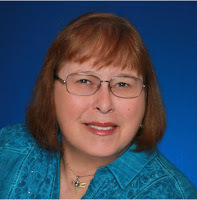The Joys and Challenges of Crafting A Series of Connected Stories
 Hi all, Winnie Griggs here. Today I want to talk about one of my favorite subjects, namely Connected Stories.
Hi all, Winnie Griggs here. Today I want to talk about one of my favorite subjects, namely Connected Stories. Connected stories refers to a multi-book series written by one or more authors where all the stories have one or more connecting thread.
As a reader I’ve always loved them. After all, what can be better than knowing that the characters and story world you’ve just invested so much time and emotion into are going to show up again in one or more books to come.
On the other hand, as an author it never occurred to me to try to write a series of connected stories myself, at least not until I wrote my seventh book, The Christmas Journey. The heroine and hero of that book each had siblings who really tugged at me to tell their stories. I ended up writing two more novels and one novella in the story world of Knotty Pine, Texas.
Since then I’ve completed a ten-book series called The Texas Grooms and participated in the three book Irish Brides continuity with two other authors. I’ve also got another couple of series in the works that I’ll talk about in another post.
For those of you interested in crafting a series of your own, I thought I’d share a few insights I picked up along the way.
FIRST, HOW DO YOU KNOW IF YOUR IDEA IS RIGHT FOR A SERIES

Not every story lends itself to being part of a series. Some are stand alone and rightfully so. On the other hand:Do you have one or more secondary characters who are strong enough to carry their own book? Do you have a theme or trope you want to explore in several ways with different characters? Do you have one character whose story and/or growth arc you want to tell over multiple books?If you can answer yes to any of these questions, then you MIGHT have the makings of a series.Other things you need to consider:Can you make the books in your series different and intriguing enough to hold your readers’ interest, but alike enough to make each feel like part of a cohesive series? Do you have the discipline as a writer to stick with the series to the end? Are you organized enough to keep up with all your character and story world details from book to book?If this is a multi-author series, do you play well with others or are you more of a lone wolf when it comes to writing projects?
SO, WHAT ARE SOME OF THE WAYS TO CONNECT STORIES

There are a number of different ways to tie your series of stories together. Some ways you can connect them are:
For examples of this type of connecting thread, think of book series featuring characters like Sherlock Holmes, Stephanie Plum, or Harry Potter.
· Through a cast of characters connected by family, where a different member of the family is each featured in their own book. Examples of these type series are: * Debby Giusti’s Amish Protectors series – the heroines of the three original books are all sisters* The Seven Brides for Seven Texans series headed up by Erica Vetsch – the seven Texans referred to in the series title are all brothers* The 6 book Texas Twins Love Inspired continuity that Glynna Kaye participated in is built around siblings* Jan Drexler’s The Journey to Pleasant Prairieseries also has interwoven sibling connections* Mindy Obenhaus’s Rocky Mountain Heroesseries revolves around the stories of 5 brothers.* My own Knotty Pines series is connected by a tapestry of siblings.
· Through a cast of characters connected by occupation or vocation. Examples include: * Debby Giusti’s Magnolia Medical series where the heroes and heroines are scientists at the same laboratory in Atlanta.* The Seven Brides for Seven Texas Rangersseries headed up by Erica Vetsch features heroes who are all Texas Rangers from the same squad
· Through a common location or community. Some examples are: * Glynna Kaye’s Hearts of Hunter Ridge series all take place in the same small Arizona mountain town.* Mary Connealy’s Montana Marriages series feature heroes who all live in proximity to each other* My own 10 book Texas Grooms series are all set in the fictional town of Turnabout, Texas and feature a community of recurring characters
· Through a cast of characters with a shared experience. Examples are:* Mary Connealy’s Trouble In Texas series – all three of the heroes were prisoners in Andersonville* The first 4 books of my Texas Groomsseries – this was originally conceived as a four book series (later expanded to ten) featuring the 4 men who came to Texas from Pennsylvania to take part in a marriage lottery of sorts
· Through a theme or trope. An example of this is:* Ruth Logan Herne’s Double S Ranch western series – these stories loosely portray the three men from the Prodigal Son story* Melanie Dickerson’s Fairy Tale Romance series – each book in the series is a reimagining of a classic fairytale.* Erica Vetsch and I contributed to Journeys of the Heart, a three-author novella collection where the three stories were connected simply by the theme of travel across distances and from an old life to a new one.
If you’re familiar with the books in the examples above, you’ll notice there are several that could have fit under more than one category – this is not unusual. There are probably other way to connect stories, but I think this covers the most common ones.
Now let’s discuss some pros and cons of writing connected series.

PROS
They help to build a reader following – as I said at the opening of this post, readers love connected stories. If the first book in the series does its job well, you’ll have readers eagerly looking forward to the next book in the series Writing connected stories can help you write faster. This is because, in most cases, you’ve already done most of the work of building your story world when you wrote the first book of the series. Subsequent books will only require that you build on this rather than forcing you to start over from scratch. Connected stories allow you to play with a larger story arc. With a series of connected books, you can expand themes and story arcs across multiple books rather than relegating them to the confines of one book. With connected stories, depending on the type of connection, you can often revisit characters. Those characters you’ve invested so much time and emotion in can now live beyond the pages of their own book and make appearances in future books as secondary characters.
CONS
There’s no getting around it - it’s a challenge to set everything up correctly. When you’re planning to write a series, it is crucial that you set up your story world and its inhabitants in the very first book in a manner that will support all the subsequent books. This can be especially tricky if you don’t have a firm idea of where you want the series to go.Then there’s the challenge of including backstory from prior stories into your subsequent books. You want readers who might pick up a book in the middle of the series to be comfortable in the world you’ve created and at the same time you want readers who have been with you from the beginning not to feel like you’re weighing down the current story with too much repetition of ‘what came before’. It’s a delicate backstory balancing act that you’ll have to learn to master.Writing connected stories forces you to keep up with minor details from prior books. When you’re working on a series of connected books it’s important to come up with a good system to keep up with all the little details that may appear from book to book - what is the name of the school’s principle, what street is the library on, is the river east or west of town, what’s the name of that dog that showed up in book 1 - those sorts of things.There’s the danger of getting in a rut - writing about the same story world with the same cast of characters can sometimes lead to you as a writer getting tired of the whole thing before you reach the conclusion of your series. This can be disastrous, not only for your sense of fulfillment as a writer, but also for your readers – a lack of enthusiasm on the writer’s part will often translate into a so-so story for the reader.You can also run into trouble meeting reader expectations for your vision. Readers will form their own expectations of what subsequent books in the series should focus on. They’ll form attachments to secondary characters that you may or may not plan to feature in the future. Or they will try to pair up characters that you have other things in mind for. This is not necessarily a bad thing – it shows the readers are really invested in your series. But, as the author, you need to be prepared to respond to this sort of feedback.
Do the pros to writing a series outweigh the cons? That’s a personal question that will be answered differently for each author and each series. But there is no doubt that a series of connected stories, when executed well, are big hits with readers.

So, how do you feel about connected stories? And what did I miss in my analysis?Join the discussion - I'll be selecting one person from those who leaves comments to receive all 4 books in my Knotty Pine series, and one person to receive a copy of the Journey's of the Heart novella collection that features stories from me and Erica.
Published on August 16, 2018 22:00
No comments have been added yet.



